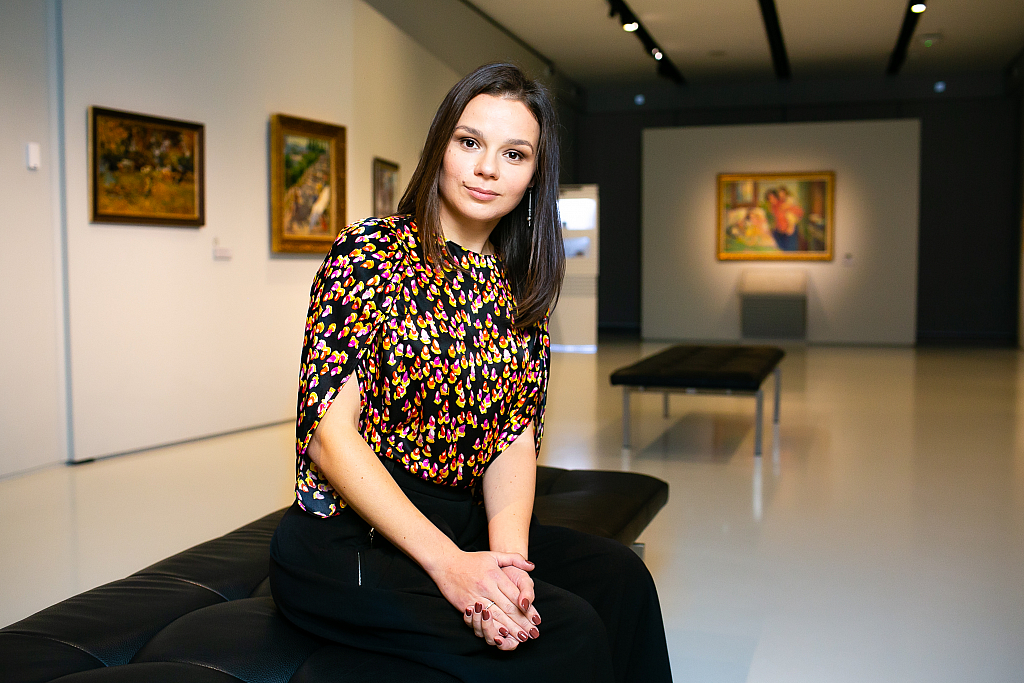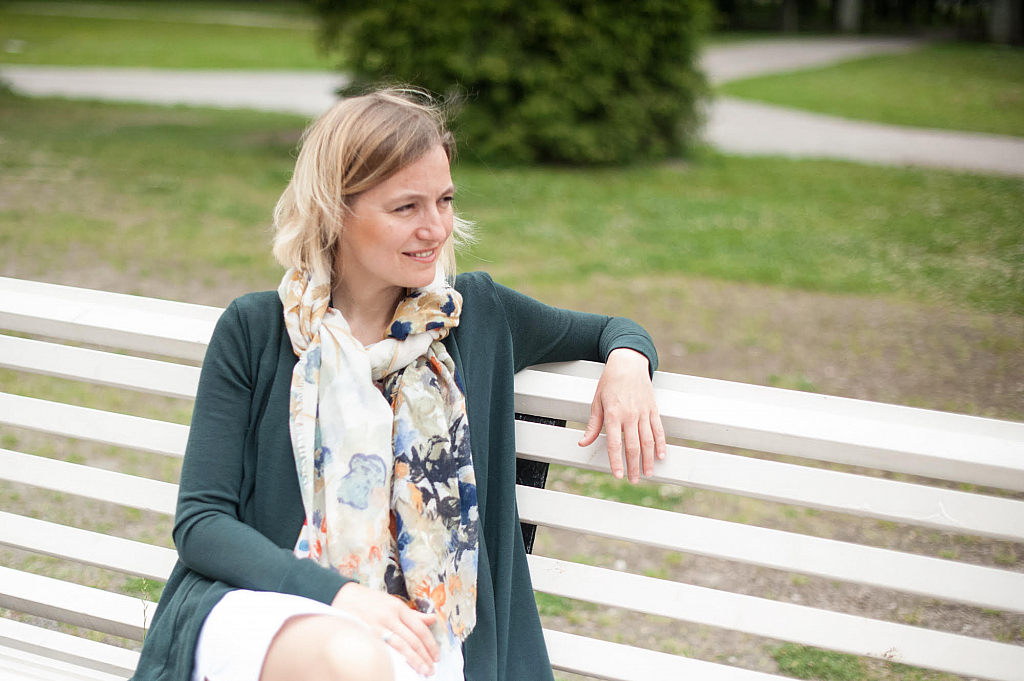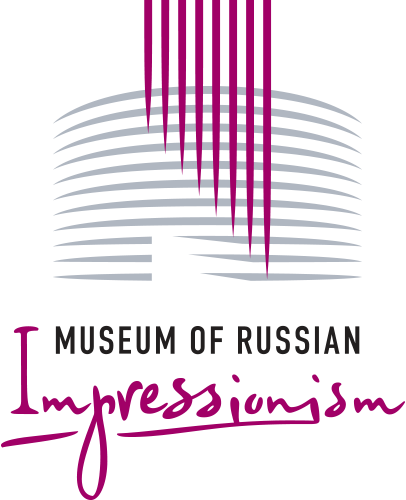Museums Under Quarantine. From Moscow to Kyoto
17 May 2020
The world is changing drastically before our eyes. This affects our museums, exhibitions, our visitors and us personally. Museum employees are people who are in love with what they do. They go to the “temples of culture” in order to worship art, people, sensibility, kindness and everlasting virtues, and not simply to earn money. Museum people even share the same language, it is a universal language of art, images and stories. With this project, we want to reflect on how the area will evolve, how we shall build our work, how we can help our visitors and how not to lose our connection with them at this challenging time.
The Museum of Russian Impressionism has interviewed people from different museums across the world and learned how their life is organized now.
Interview of Conversation between the director, Yulia Petrova, with the director of the Kadriorg Art Museum (branch of the Art Museum of Estonia), Aleksandra Murre.
Julia: Aleksandra, how long ago did you become the director of the Kadriorg Art Museum? How was your working day organized before the quarantine?
Aleksandra: There isn’t any general routine and fixed schedule in the museum work. The range of my duties is very diverse and varies from long meetings either at the museum or in the Ministry, to my active participation in hanging paintings or giving a public lecture in the museum classroom or holding a class with students at the Academy of Arts. Sometimes I am blessed with quiet days of work in the library or archives as in our small museum I am not just a director, but also a curator of some exhibitions (I have a degree in art history and I had already been working as a curator for 8 years when I was promoted to director in 2013). But of course, I spent most of my days in the museum, managing all administrative tasks from my office on the ground floor of the Kadriorg Palace.
Julia: We closed the Museum of Russian Impressionism on the 17th of March. This was a very hard decision to make. On the morning of March 16th, I reassured my team that we will keep working and nothing will change. On the morning of March 17th, I insisted we continue working from the office. But the situation in the city and the country, in general, was changing so quickly that only three days later all our staff started to work from home. It seemed that this measure was temporary, though. Restaurants, shops, schools, beauty salons were still operating in Moscow then. It was impossible to imagine that complete self-isolation will become our new reality. How did you adapt? How is your day organized now?
Aleksandra: The museum was closed due to the quarantine on March 13th, and most of the employees started to work remotely (except for conservators and technical staff). Since all schools are also closed, my kids, who are in their 1st and 10th year, are now at home. Therefore, I have to navigate between my video calls and their online lessons, as well as help my youngest child with his homework, answer my phone calls, write texts and prepare new programs. And of course, I miss the opportunity to have lunch or snacks at the cafeteria as it means I have extra workload related to cooking. We start our day with the alarm clock. At 8 am we have a quick warm-up, then breakfast and finally everyone gets busy with his responsibilities. As it is often the case with something new, we needed some weeks to get used to the pace of remote work. Now our routine is balanced and we more or less meet the deadlines. Fortunately, in Estonia walks outside were permitted even under total lockdown. That’s why we could enjoy some family time outside after a long day in front of the screen. We got very enthusiastic about cycling, luckily, we live by the seaside and there are numerous cycle lanes close to our house. Now we are getting ready to switch our daily routine back to normal as we will soon leave our “foxholes”.
Julia: How does the museum work now? Do you develop online formats or prepare new offline projects? Is there any particular one you feel especially proud of or you like the most?
Aleksandra: Along with other museums we responded to this new reality with very active online work. At first, we made our past virtual programs publicly available and started to work on the new ones. It was especially painful to see some exhibitions being closed before the date and dismantled under quarantine. We made our first video tours of those exhibitions and then streamed them on our social media and on the website. These tours were also rebroadcasted in the news on Estonian TV. During the first weeks of the quarantine, the audience was especially perceptive, and our first streaming from the exhibition had an exceptional response. The video was seen by a total of 60 thousand people with 20 thousand who watched it live, we were flooded with positive feedback. But everything new once becomes common, our following streams were popular too, though not to the same extent. Video tours were broadcasted at a specific time once a week and became a tradition. The last streaming was on May 5th. Now our efforts are aimed at reopening the museum which is planned for May 19th. During the period of the quarantine, we prepared five digital museum lessons that can be used at schools even after the crisis when e-learning will be replaced by classroom education. These materials can substitute for a museum visit in a certain way, but in fact, they should serve as a great supplement to it. The program includes a brief overview of the topic, some exercises (written and oral, play-based and interactive educating activities) and a video guide. The latter part may be omitted if an offline visit is possible, but the other part of the program is a great way to prepare yourself before the visit and then to revise the information learned. For quite a long time we’d been thinking about creating such program, but the COVID-19 crisis accelerated the process. Teachers love using these materials, but let’s see what the results and their feedback will be in the long run. It’s already clear that this massive digitalization trend will change both education and culture. However, for the museums, it would still be very important to offer its visitors an opportunity of “real-time” contact with art, and this experience cannot be replaced by any video or multimedia content. During the quarantine, we performed our day-to-day duties too. Local-based exhibitions were opened and now are looking forward to museum reopening. International projects were moved to next year, unfortunately. We keep working on new exhibitions that are planned for this autumn, and our team is especially anxious to see the launch of “Always with Us. Cats and Dogs in the Art XVI-XIX centuries” exhibition. This project will bring together numerous works from the Hermitage museum, the Finnish National Gallery, and various Estonian collections. We are planning to publish a catalogue and a children’s book related to this exhibition, as well as have a busy schedule of events. So, you may imagine how much work that involves! No chance to feel bored. I was very surprised to read some posts in the feed, people were complaining that they are bored, tired, and have nothing to do. I can say with confidence that most museum employees worked even harder during the months of lockdown.
Julia: How does your city look now? Can you move around freely? Does it visually differ from before? What do you feel when you go outside? Recently I thought of a game I used to play as a little girl. When I was doing the housework, I imagined that one day all people would leave the planet, and many years later I would come back to the same flat to remove the dust. The image of closed restaurants with tables fully set reminds me of that game.
Aleksandra: Tallinn is slowly coming back to life. But during the first month and a half, all state requirements and healthcare regulations were accurately followed, with no sanctions imposed though. The city was empty, which was particularly weird for the Old Town as on a warm sunny day it is normally flooded with tourists, and now it was completely silent and deserted. Since we were still allowed to go outside, local parks, forests, and walking trails were quite full of people. But everyone is very diligent about social distancing, and alter the route if there’s someone in the way. This situation is very hard for kids as they are used to playing with each other.
Julia: My parents live in Saint-Petersburg, and I managed to visit them with my kids just before the lockdown. Together with my sister we were looking forward to seeing each other, chatting, playing board games, we wanted our kids to stay together. However, when we finally met, instead of games we were making face masks for the entire family. Has the pandemic affected you personally?
Aleksandra: Our family has very close bonds, its immediate circle includes my parents and the family of my sister. My parents devote a lot of their time to grandchildren, and this forced isolation hits us hard. They are in a high-risk group, so they shouldn’t meet their children or grandchildren. We bring them groceries with no contact and keep in touch via Skype. But at home I spend a lot more time now – we go out, talk and play with my kids. I usually have frequent business trips, so this period is seen as an unexpected vacation. Mom is always at home.
Julia: I already hear from my friends and read in the feed that when this quarantine is over, people will start a new life, they will afford everything they couldn’t afford before, with no regrets. Two couples I know decided to get married as apparently, it’s silly to put off those plans, circumstances may ruin your great ambitions. Do you think museum life will also change after the isolation?
Aleksandra: I am quite skeptical about the statements that after all this is over, there will be a new life. I believe that everyone knows this feeling of extreme happiness and euphoria when we recover from a bad disease: we realize that in fact, we need very little – that nothing aches. But a few weeks later this truth is already forgotten, and we are no longer satisfied with little joys. Same here. At first, people will behave differently, which may result in a renewed interest from visitors, if we talk about museums. People who were putting off their visit for a long time will finally come. Some of them will even make it a habit, become a member, so the museum will get new friends. Though I think that it won’t be more than 10% of the total number of guests. Now it’s important for the museums to draw long-term conclusions and amend its approach to the audience, review the existing formats of events and established communication with clients.
Julia: I am so looking forward to normal life. I believe that transition will be gradual. At first, they will open kindergartens, parks, shops, then restaurants and finally – cultural institutions. I want to witness each of these stages, want to celebrate them, want to try everything again. I can imagine our first day in the office, when we order some treats to celebrate the occasion. And what is your dream now?
Aleksandra: Obviously, the transition will be gradual. We are already planning our comeback to the office. Part of the staff will only work on specific days in their rooms in order not to meet other people. After we open the museum to public, some restraints will stay – any gatherings or events can only be held online till the end of summer. In addition to this, schools in Tallinn won’t reopen this academic year, so parents will face additional complications. They will need to organize home learning for their children provided that they are in the office themselves and grandparents are still under quarantine. So, it seems that we won’t be able to celebrate the comeback altogether. Hopefully, we will manage to go to the countryside with the entire team – four colleagues had their birthdays in April and May, so we owe them a big party.





